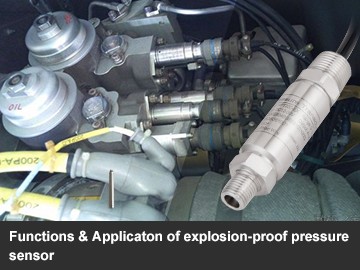Functions and applicatons of explosion-proof pressure sensor
The application range of the explosion-proof pressure sensor is quite extensive, which also determines that its requirements are very harsh, and the requirements for pressure sensors are different in different environments. Pressure sensors used in natural gas control systems, natural gas compressors, gas dispensers, etc. must have anti-riot capabilities, so choosing transmitters for these environments, explosion-proof pressure sensor is the first choice.
Explosion-proof pressure sensors are mainly designed with an explosion-proof housing and an intrinsically safe explosion-proof circuit. The circuit uses signal isolation and amplification, frequency cut interference design with strong anti-interference ability, lightning protection, over-voltage protection, current-limit protection, impact resistance, anti-corrosion, compact and convenient . Also it is with 316SS full-sealed welding, small and compact structure, good moisture resistance and excellent media compatibility advantages.
Explosion-proof pressure sensors have other applications, such as oil well platforms, wellhead pressure equipment, blowout preventer pipeline equipment, mines, oil tanks, oil storage and transportation monitoring, petrochemical equipment, refining, oxygen transmission systems and pipelines, hydrogen Equipment, power stations, boilers, thermal power units, petrochemical environmental protection air pressure light industrial machinery metallurgy and other pressure measurement environments with explosion-proof requirements. In these environments, an explosion-proof pressure sensor is usually required.
Some precautions need to be taken during the installation of explosion-proof pressure sensors. For example, explosion-proof transmitters must meet explosion-proof regulations during installation. Also, the measured medium is not allowed to freeze, otherwise the sensing element isolation diaphragm will be damaged, resulting in damage to the transmitter. Finally, it should be installed in a place with small temperature gradient and humidity change, and no shock and vibration. Of course, there are some small details that need our attention. The specific problems depend on the scene environment. Different environments need to pay attention to different issues.






